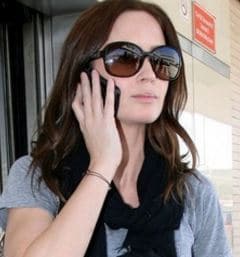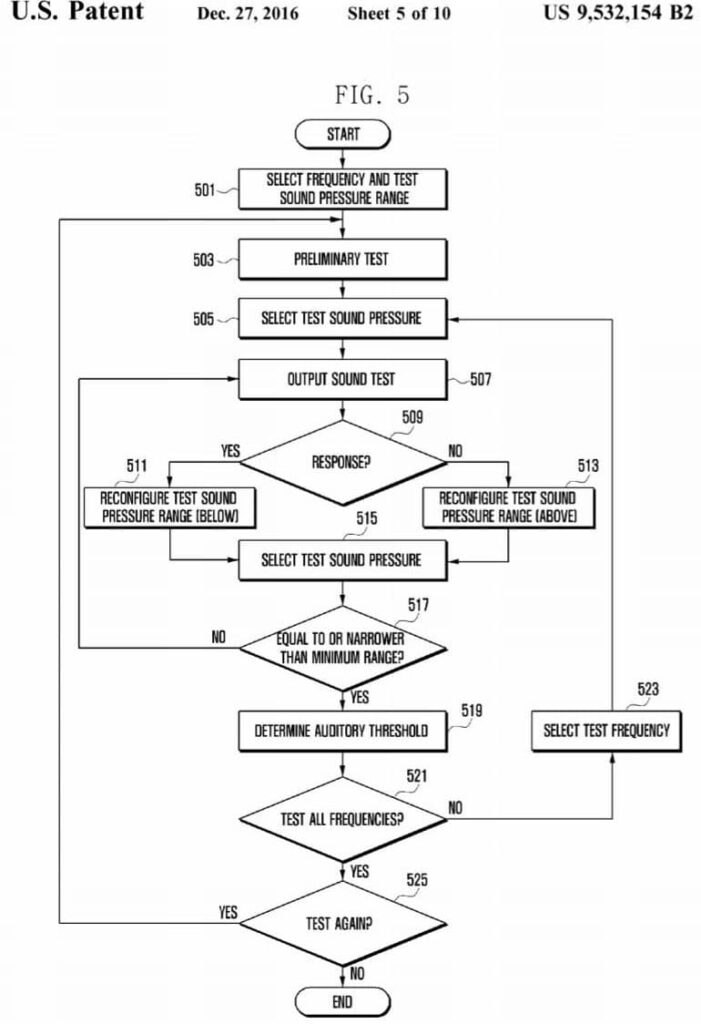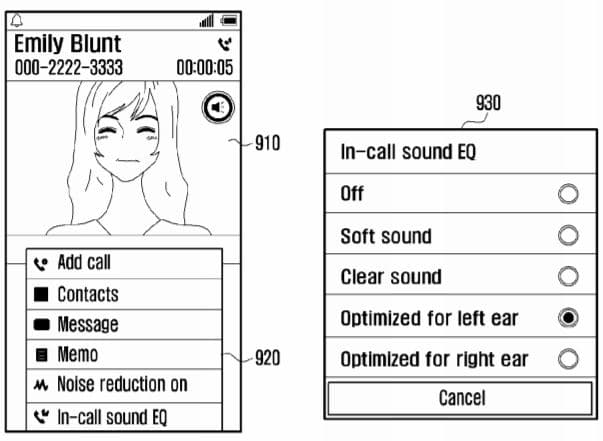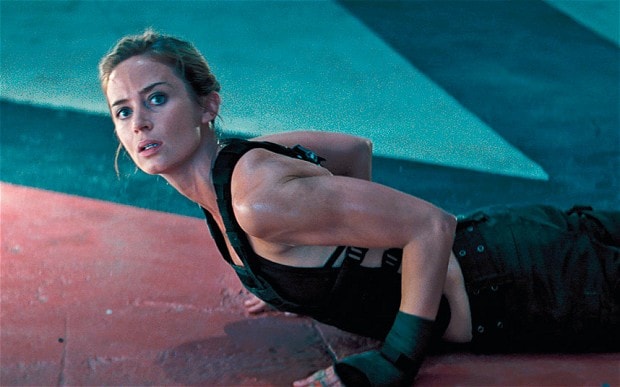Samsung phone and washer technologies exploded in 2016, but and not in a good way. Thankfully, those technologies didn’t show up in hearing aids because Samsung has yet to enter the FDA-approved US hearing aid market, despite strong expectations that it would do so in 2016. That hasn’t stopped Samsung from its end run march to redefine hearing device functionality through a monthly blizzard of new patents.
Consider the explosions and the final patent on the 2016 list of US patents awarded for hearing devices (below). USPTO #9532154 (Method and Apparatus for Customizing Audio Signal Processing for a User), invented by “K. Bang” (really), describes a mobile device and method for applying noise reduction, dynamic range compression, and “tone color” as part of:
“… processing a received audio signal in adaptation to hearing characteristics of a user, in order to output audio that is best-suited for the user.”
At the core of K. Bang’s invention are in vivo hearing threshold testing procedure and template storage (Figure 1).
Hearing with a Bang, in a Good Way
It seems like just the other day that the hearing healthcare community and the FDA specifically were sounding alarms about online, self-administered thresholds tests to fit hearing aids1.
That seems so yesterday, now that mobile devices are set to do the tests automatically. It’s also much more democratic and personal at the same time. It optimizes hearing for those with as well as those without hearing loss, and does so according to listeners’ preferences and situational noise.
K. Bang’s invention gives an everyday application example (Figure 2) that we can all relate to. Say you want to talk to Emily Blunt or she wants to talk to you. I’m sure that happens all the time, right? And sometimes you have trouble hearing Emily, especially if you have a hearing loss or you’re in a noisy Starbucks.
No problem. Simply dial Emily’s phone number (see Figure 2), select your preferred EQ, make sure the noise reduction is working, and decide which ear you’d like her to whisper into. Voila, you’re on the air with Emily and you can hear her loud and clear. Just don’t hit “cancel.”
The Big Bang Theory
K. Bang’s invention moves the concept of hearing “aid” far past the way we used to think of “hearing aids.” But it only handles phone calls and other wireless content in its present form.
We’ll wait for the next cutting edge patent that tomorrow brings. It’s just a hop, skip and a jump to have the same happy processing work on audio-borne signals arriving at the ear from a variety of sources other than phones.
And that includes real life talkers in the same room, for instance Emily, if she happens to show up in real life.
Footnotes
1This post is not about diagnostic evaluations.
images from Pinterest and The Telegraph










